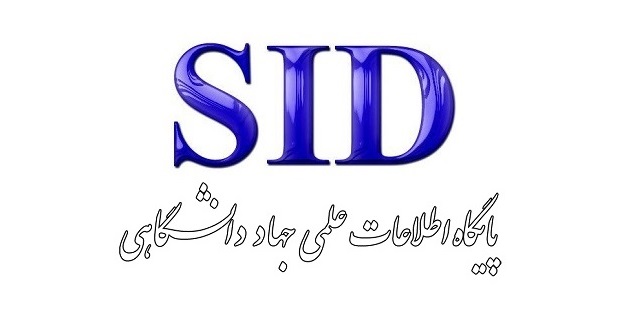جنگ سایبری و پیامدهای آن برای امنیت ملی ایران
کلمات کلیدی:
امنیت سایبری , حملات سایبری , جنگ اطلاعاتی , زیرساخت های حیاتی , امنیت ملی ایرانچکیده
امنیت سایبری در سالهای اخیر به یکی از ابعاد راهبردی امنیت ملی تبدیل شده است. با گسترش حملات سایبری و پیچیدگی فزاینده روشهای نفوذ، تهدیدات سایبری نه تنها امنیت اطلاعات، بلکه زیرساختهای حیاتی، اقتصاد، دفاع ملی و افکار عمومی کشورها را نیز تحت تأثیر قرار داده اند. جمهوری اسلامی ایران طی دو دهه اخیر، هدف حملات متعددی از جمله بدافزارهای استاکس نت و شعله، نفوذ به سامانههای مالی و اختلال در زیرساختهای حیاتی مانند حمل ونقل و انرژی قرار گرفته است. پژوهش حاضر با استفاده از روش توصیفی-تحلیلی و بر مبنای مطالعه کیفی، به بررسی پیامدهای این حملات بر امنیت ملی ایران پرداخته و چالشهای موجود در این حوزه را تحلیل کرده است. یافتههای تحقیق نشان میدهد که ضعف در هماهنگی نهادی، وابستگی به فناوریهای خارجی و خلأ سیاست گذاری ملی، آسیب پذیری سایبری کشور را افزایش داده است. در این راستا، تدوین راهبرد جامع امنیت سایبری، تقویت زیرساختهای بومی، توسعه همکاریهای بین المللی و ایجاد مرکز ملی هماهنگی امنیت سایبری به عنوان راهکارهای پیشنهادی ارائه شده اند. بدون اتخاذ تدابیر پیشگیرانه و هماهنگ، تهدیدات سایبری میتوانند به یکی از مهم ترین چالشهای امنیتی ایران در سالهای آینده تبدیل شوند.
دانلودها
مراجع
Abdollah Khani, A. (2003). Security Theories: An Introduction to National Security Doctrine Planning (Volume 1). Abrar Contemporary Cultural Studies and Research Institute.
Ahmadinejad, H. (2010). NATO's Presence in Iran's Surrounding Environment and the National Security of the Islamic Republic of Iran Allameh Tabataba'i University, Faculty of Law and Political Science].
Ahmed Jamal, A. (2021). A Review on Security Analysis of Cyber Physical Systems Using Machine Learning. Materials Today: Proceedings.
Alghamdi, M. I. (2021). Determining the Impact of Cyber Security Awareness on Employee Behaviour: A Case of Saudi Arabia. Materials Today: Proceedings. https://doi.org/10.1016/j.matpr.2021.04.093
Baman Eghbali Zarch, A. (2022). Cyber Threats and Attacks Against Iran. Institute for Political and International Studies (IPIS).
Beaumont, P. (2010). US Appoints First Cyber Warfare General. The Observer, 10.
Brenner, S. W., & Clarke, L. L. (2010). Civilians in Cyberwarfare: Conscripts. Vanderbilt Journal of Transnational Law, 43, 1011-1076.
Buzan, B. (1991). New Patterns of Global Security in the First-Twenty Century. International Affairs, 67(3), 431-451. https://doi.org/10.2307/2621945
Buzan, B. (1999). People, States, and Fear. Strategic Studies Research Institute.
Cassese, A. (2005). International Law. Oxford University Press.
Castells, M. (2010). The Information Age: Economy, Society, and Culture. Tarh-e No.
Eriksson, J., & Giacomello, G. (2006). The Information Revolution, Security, and International Relations: (IR) Relevant Theory? International Political Science Review, 27(3), 221-XXX. https://doi.org/10.1177/0192512106064462
Hare, F. (2010). The Cyber Threat to National Security: Why Can't We Agree? CCD COE Publications.
Kizza, J. M. (2007). Ethical and Social Issues in the Information Age. Springer-Verlag.
Krishnasamy, V., & Venkatachalam, S. (2021). An Efficient Data Flow Material Model-Based Cloud Authentication Data Security and Reduce a Cloud Storage Cost Using Index-Level Boundary Pattern Convergent Encryption Algorithm. Materials Today: Proceedings. https://www.sciencedirect.com
Liu, X., Zhang, J., Zhu, P., Tan, Q., & Yin, W. (2021). Quantitative Cyber-Physical Security Analysis Methodology for Industrial Control Systems Based on Incomplete Information Bayesian Game. Computers & Security, 102, 102138. https://doi.org/10.1016/j.cose.2020.102138
Mandel, R. (2008). The Changing Face of National Security. Strategic Studies Research Institute.
Rosenau, J. (2011). The Information Revolution, Security, and New Technologies. Strategic Studies Research Institute.
Sayyad, M. K., Amini, A., & Taheri, A. (2020). Cyber Threats and Security Measures in Virtual Space: A Comparative Study of the Approaches of the United States and the Islamic Republic of Iran. National Security Scientific Quarterly, 10(38), 293-331.
Starr, S. H. (2009). Towards an Evolving Theory of Cyber Power. National Defense University, Center for Technology and National Security Policy. https://doi.org/10.3233/978-1-60750-060-5-18
Talebpour, A. (2019). A History of Cyber Attacks in Iran and the World. Young Journalists Club News Agency.
Torabi, G. (2018). Challenges and Vulnerabilities of the Islamic Republic of Iran in Cyberspace. Strategic Studies, 21(1), 167-195.

دانلود
چاپ شده
ارسال
بازنگری
پذیرش
شماره
نوع مقاله
مجوز
حق نشر 2025 Behrouz Nasiri (Author); Ghasem Torabi (Corresponding Author); Alireza Rezaei (Author)

این پروژه تحت مجوز بین المللی Creative Commons Attribution-NonCommercial 4.0 می باشد.







